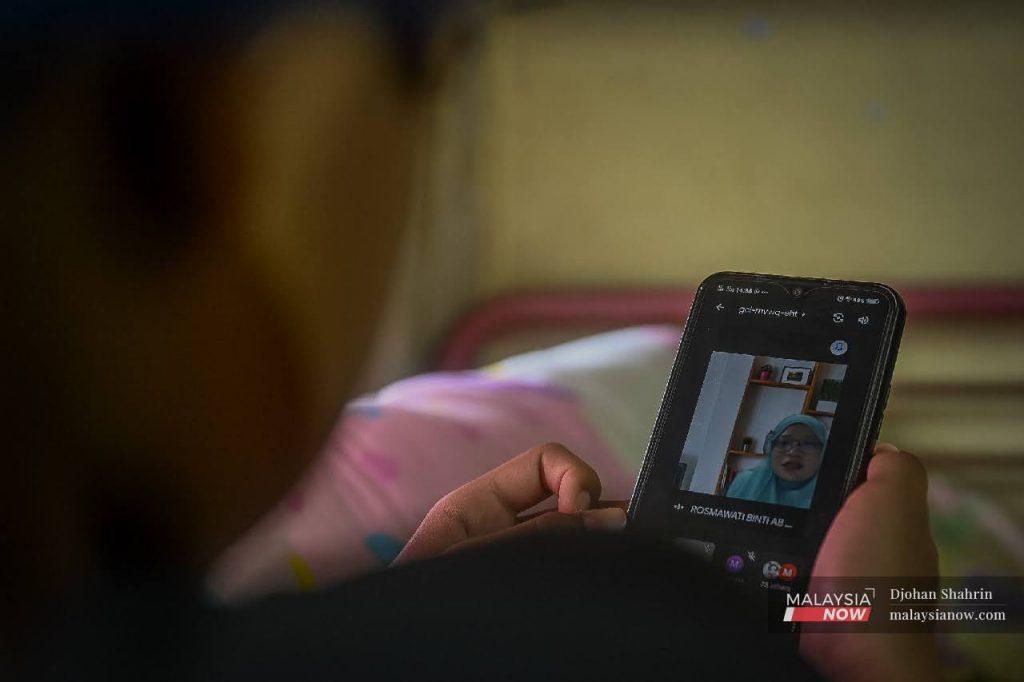Smartphones to join the list of back-to-school supplies?
Digital devices have become synonymous with learning since the start of the Covid-19 pandemic.
Just In
Pencil box, check. Water bottle, check. Smartphone, check?
More than a year after the Covid-19 pandemic hit Malaysia, triggering lockdowns and disrupting daily activities, the question of whether mobile phones will become part and parcel of school supplies for students has arisen, as thousands of children continue with home-based learning amid the slow move back to the classroom.
Azlin Norhaini Mansor, an education expert from Universiti Kebangsaan Malaysia, said teenagers and children should by right be among the last to be given phones as these can be easily misused or lead to overuse and addiction.
But many things have changed since the pandemic, and smartphones, alongside tablets, laptops and computers, are now vital for following classes online during the long periods when schools are shut down due to fears of widespread contagion.
“The question is, should all teenagers and children who are attending school be given the responsibility of owning a phone in the name of education when the high chances of abuse are public knowledge?” Azlin said to MalaysiaNow.
Given the current circumstance, she said, smartphones will indeed be seen as a basic school supply as long as the situation necessitates home-based or remote teaching and learning.
The government determines the need to attend school based on state, type of institution and whether or not students are sitting for public examinations.
While some have returned to school for face-to-face classes, others continue to follow their lessons from home, at least for now.
The newfound dependence on gadgets for education has brought to the surface a number of issues including so-called digital poverty and the evolving nature of communication between teachers and students.
Educators have mainly relied on platforms such as Google Class, Google Meet or Zoom in order to hold their classes, while many teachers also use apps like WhatsApp to communicate with students, share learning material and distribute homework.
Students whose families cannot afford to give them their own phone usually share devices with their parents. Those with siblings who are also attending school meanwhile must take turns using the gadgets which disrupts their learning experience.
A study by the education ministry last year revealed that 36.9% of students in the country do not have a digital device at all while 90% do not have a personal digital device.
Azlin said questions also arise about who should be responsible for educating students on the use of gadgets and how to use these ethically and within bounds.
“How are we to teach them the responsible use of smartphones? Is there a learning module to impart such responsibility to them?”
Amin Md Taff, vice-chancellor of Universiti Pendidikan Sultan Idris, said the use of mobile phones and the provision of telephone lines for students was appropriate and in line with the technological advances heading towards the Industrial Revolution 4.0.
“Phones have become the closest tool for students,” he told MalaysiaNow. “When phones are allowed, students will be able to access the material provided.
“And they are already proficient in the use of mobile phones,” he added. “This simplifies the learning process.”
Amin said the reality is that many of today’s students have been exposed to the use of gadgets from a very young age.
“They are what are known as ‘digital natives’,” he said.
He acknowledged the cons of using smart phones but said the benefits available to students surpass these.
“Teachers no longer need to teach face-to-face,” he said. “What is important is that teachers become the curators of knowledge.
“Pupils can find material for discussion from what is taught. This is what is known as learning by doing.”
He said teachers themselves could also help instil ethics and a code of appropriate phone use in students.
Subscribe to our newsletter
To be updated with all the latest news and analyses daily.
Most Read
No articles found.
